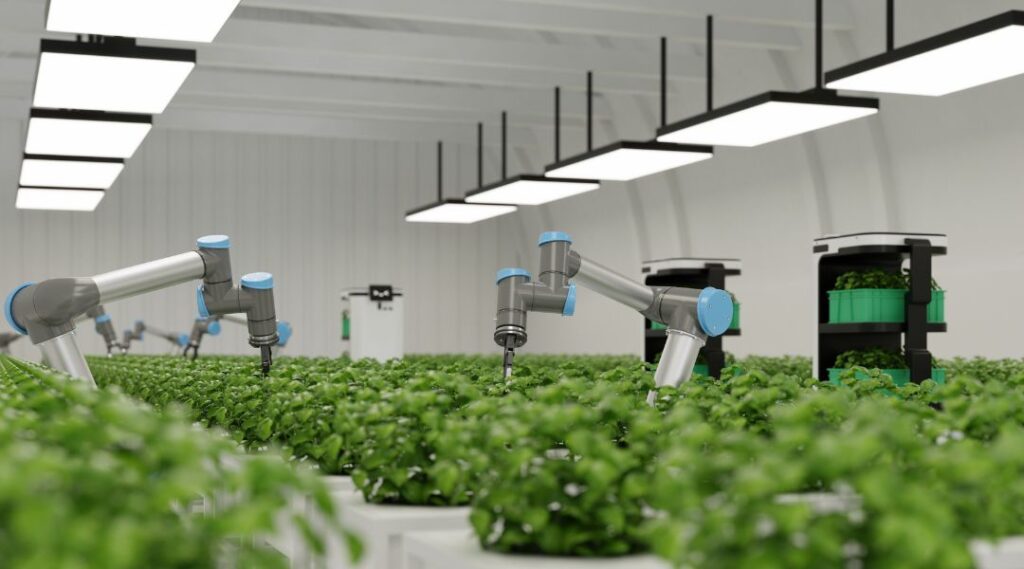
In an era where sustainable farming practices are paramount, regenerative agriculture has emerged as a transformative approach that goes beyond conventional methods. This article delves into the principles and practices of regenerative agriculture, highlighting its potential to rejuvenate soil health, enhance biodiversity, and create resilient farming ecosystems.
Regenerative agriculture is a holistic approach that aims to restore and enhance the health of the land by promoting soil regeneration, biodiversity, and overall ecosystem health.
Table of Contents

Soil Health as the Foundation:
Regenerative agriculture maintains soil health by fostering practices like cover cropping, crop rotation, minimal soil disturbance, and integration of livestock. These methods promote soil structure, increase organic matter, enhance microbial diversity, and reduce erosion, leading to improved fertility, water retention, and resilience to environmental stresses.
Diverse Cover Cropping:
Diverse cover cropping involves planting a mix of different plant species to cover and protect the soil between cash crops. This practice enhances soil health by adding organic matter, improving nutrient cycling, suppressing weeds, and providing habitat for beneficial soil organisms, resulting in increased fertility, reduced erosion, and enhanced resilience to environmental pressure
Holistic Grazing Practices:
Holistic grazing practices involve managing livestock in a way that mimics natural grazing patterns, promoting soil health, biodiversity, and overall ecosystem resilience. By rotating livestock through pastures, allowing for rest periods, and adjusting stocking densities based on grass growth, holistic grazing improves soil fertility, reduces soil erosion, enhances plant diversity, and contributes to healthier ecosystems.
Agroforestry for Biodiversity:
Incorporation of agroforestry practices, where trees and shrubs are integrated into agricultural landscapes. This approach enhances biodiversity, provides habitat for beneficial insects, and contributes to carbon sequestration.
Water Conservation and Management:
Involves implementing practices to optimize water usage, minimize waste, and protect water resources. This includes techniques such as drip irrigation, rainwater harvesting, soil moisture monitoring, contour plowing, and cover cropping. These practices help to reduce water runoff, increase water infiltration and retention in the soil, and mitigate the impacts of drought. Additionally, adopting precision irrigation technologies and scheduling irrigation based on crop needs can further improve water efficiency.
Carbon Sequestration and Climate Resilience:
Practices like cover cropping and agroforestry contribute to the sequestration of carbon in the soil, reducing greenhouse gas emissions and enhancing the resilience of farming systems to climate variability.
Economic Viability for Farmers:
Reduced dependence on external inputs, improved soil health, and diversified income streams through agroforestry and rotational grazing can enhance the financial sustainability of farming operations.
Challenges and Adoption in Regenerative Agriculture
Regenerative agriculture often requires changes in farm management practices, including diversification and integration of crops and livestock, which can be challenging to implement at scale. Encouraging collaboration between farmers, research institutions, and agricultural organizations to develop scalable regenerative models. Investing in infrastructure such as processing facilities for regenerative products to create market demand and improve profitability.
Global Impacts and Future Prospects:
Regenerative practices can contribute to addressing global challenges such as food security, environmental degradation, and the need for resilient farming systems in the face of climate change.
Conclusion:
Regenerative agriculture has the transformative potential in creating a more sustainable and resilient future for farming. Adoption, and support for regenerative practices are crucial toward fostering a healthier planet and ensuring the long-term viability of agriculture.
In essence, regenerative agriculture stands as a beacon of hope, offering a pathway towards a more sustainable and regenerative future for agriculture. By prioritizing soil health, biodiversity, and community collaboration, this approach not only addresses the challenges faced by modern farming but also paves the way for a more resilient and harmonious relationship between agriculture and the environment.
Signup For AgriNext Conference Newsletter

